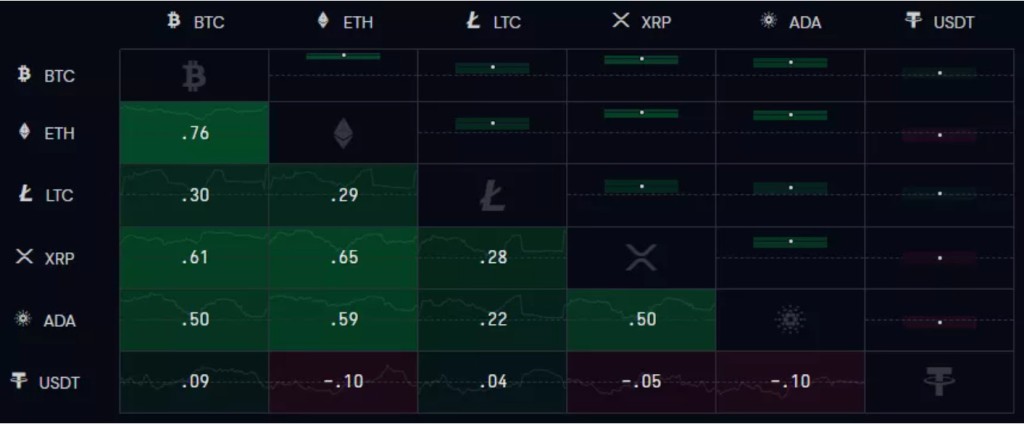A cryptocurrency portfolio is a set of digital assets that an investor stores funds in. It can include various digital assets: bitcoin, Ethereum, stablecoins, NFTs, DeFi financial products. In a diversified portfolio, losses from different components can be offset by the dynamics of growing assets. This allows you to keep your position stable in the long term. To create a well-balanced portfolio, you should carefully analyze different coins, paying attention to many factors.
What is a cryptocurrency portfolio?
A cryptocurrency portfolio is a collection of digital assets at the disposal of an investor or trader. It can include bitcoin, altcoins, NFTs, and various financial products such as DeFi indices.
The essential difference between a traditional portfolio and a crypto-focused one is that the investor keeps the latter in a non-custodial or exchange wallet.
Cryptocurrencies and tokens can be purchased on centralized trading platforms like Binance, P2P marketplaces, and OTC platforms. The ability to buy digital assets for fiat is provided in many wallets, including MetaMask and Exodus.
What is asset allocation and diversification?
Before creating a portfolio, you should be familiar with concepts such as asset allocation and diversification.
Asset allocation involves investing in various classes of financial instruments (cryptocurrencies, stocks, bonds, precious metals, etc.).
Portfolio example:
- 40% – shares;
- 30% – bonds;
- 20% – crypto assets;
- 10% – fiat currencies.
Diversification involves allocating funds across different assets or industries. For example, in the context of stocks, you can invest in a number of sectors: agriculture, technology, energy or healthcare.
Both approaches are designed to reduce investment risks and portfolio volatility. Their essence can be characterized by the saying “Don’t put all your eggs in one basket”.
Strictly speaking, digital currencies are a single asset class. However, a crypto portfolio can contain coins and tokens intended for completely different use cases.
Portfolio example:
- 40% – bitcoin;
- 30% – stablecoins;
- 15% – NFTs;
- 15% – altcoins.
Allocation of funds is an important factor determining the profitability of an investment portfolio. The concept is based on the fact that different assets behave differently in changing market and economic conditions.
Since the returns of different financial instruments and their classes do not always correlate with each other, diversification reduces the overall risk.
When compiling a cryptocurrency portfolio, one should take into account the specifics of the market, where many coins show a close statistical relationship with bitcoin.

But sometimes some altcoins show low or even negative correlation with bitcoin. Hence, careful investors can take advantage of this when compiling and reviewing crypto portfolios.
What are the main asset allocation strategies?
Patient investors can opt for a strategic distribution option. It involves the creation of a set of assets, which provides the optimal balance between the expected risk and profitability in the long term.
This approach is implemented regardless of the current market conditions – the distribution of assets is maintained even with a significant change in market conditions.
The option of dynamic asset allocation is in many ways similar to the strategic one. In this case, the portfolio is also long-term oriented and focused on the optimal balance between return and risk. However, the ratio of assets in it may change under the influence of market conditions.
In tactical allocation, the investor takes a more proactive approach. For example, trying to focus on financial instruments and sectors with the greatest growth potential. Such strategies involve more frequent trading and rebalancing. At the same time, investors can fully enter and exit assets depending on market conditions.
In a diversified portfolio, losses on its various components can be offset by the dynamics of growing assets. This makes it possible to maintain a stable position in the long term.
The more diversified a portfolio is, the better it can match the dynamics of the market as a whole. Sometimes more concentrated portfolios containing just a few well-chosen assets can perform better.
Managing a diversified portfolio requires more time, effort, and research—each component requires a thorough risk and outlook analysis.
If the components of the crypto portfolio are based on different blockchains, it may be necessary to use multiple wallets and/or exchanges.

